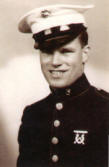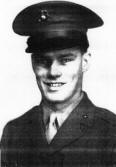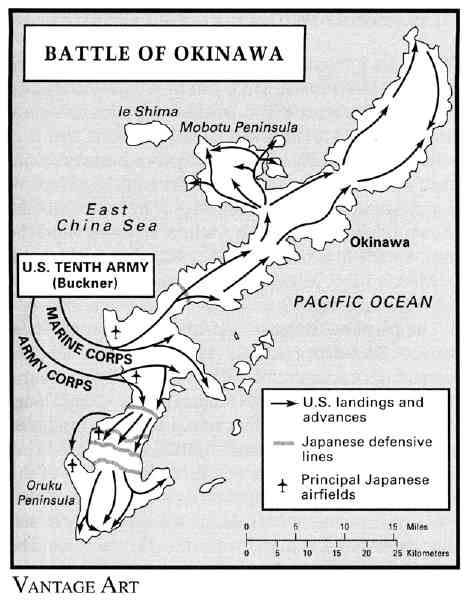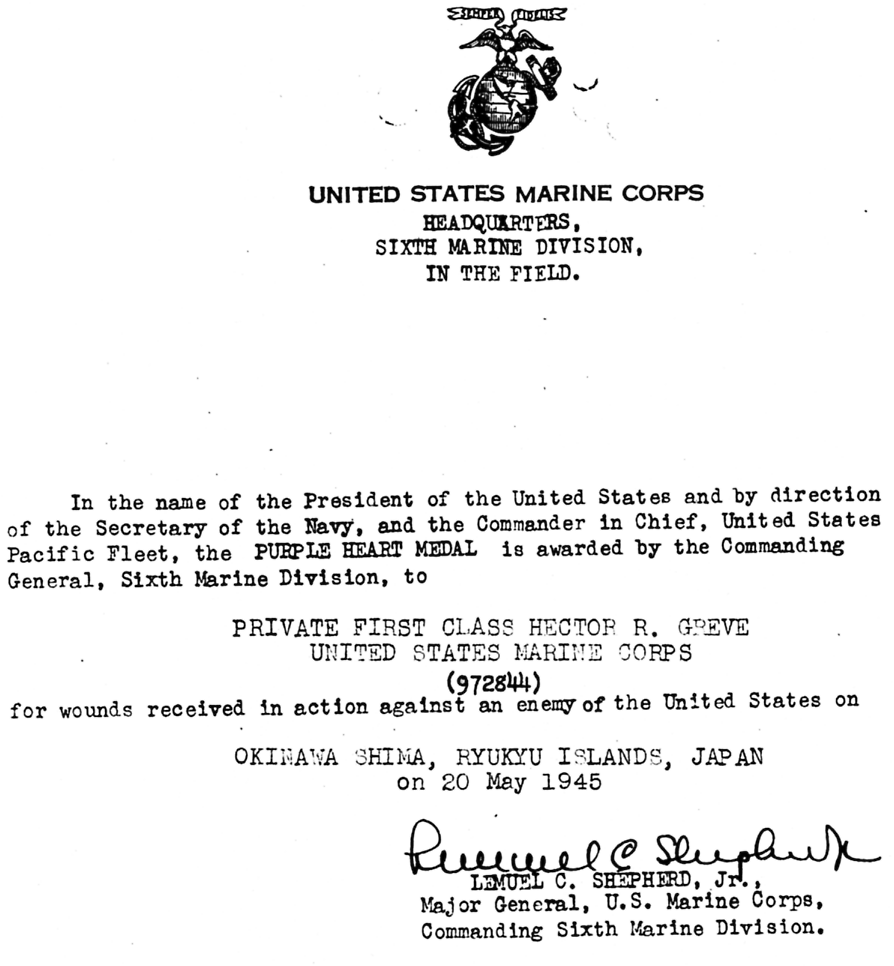|
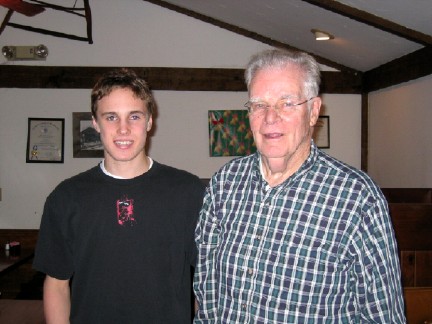
Draft and Boot Camp
Here is a map of the assualt on Okinawa
Okinawa's Beaches
The military strategy for taking Okinawa had four main phases, the advance onto the eastern coast, the clearing of the northern part of the island, the occupation of the outlying islands and then the main battle against the dug in Japanese on their hillsides. Up until Okinawa, he had been on islands that the Marines had already taken and were secured. On Okinawa the true battle began. The capture of Okinawa was to begin on April 1st, 1945, Easter Sunday and Hector’s 19th birthday. When Hector’s ship arrived near the shore, he would have to climb off the ship, down the rope ladders and get into an amphibious vehicle that would drive itself close to the shore then use tires on the bottom to get traction against the coral and drive straight up the beach. The landing was organized into waves; my Uncle was in the 5th wave. His first task on that day was 105 AMMO. That meant that he was responsible for carrying the ammunition for the AA (anti-aircraft) guns that had to be set up once the beach was secured. The beach was taken without much resistance because the Japanese, realizing the extremely large and strong presence of the Naval force present would make any large battle costly, had backed onto the hills and dug in where naval fire was nearly useless. Despite pulling their men off the beaches, the Japanese did make it difficult for the marines. One of Hector’s most terrifying memories was one of “strafing planes”. Strafing planes were planes that would go into a dive towards the ground and constantly fire round after round at the ground in hope of hitting enemy soldiers. My Great Uncle remembers looking around for cover that wasn’t there. He said it was the scariest night of his life. There were no foxholes dug out, so all he had were the ammo containers as cover. It was a terrible experience as ‘Corpsman’ calls, calls that marked a man was down, injured or worse, were common. The sky, he said, was lit up with bullets called ‘tracers’. Tracers were found in every fourth bullet in a round. It let the pilot or the AA gunners know where their shots were going even in the night. It was a terrible time as the drop of a hat determined whether you got hit or not. My Uncle however, was lucky enough to have survived without being hit.
Sugarhill and the Purple Heart
| After the beach was secured, my Uncle’s
division
was sent to
secure the North part of the island. They secured the Northern area
with
little resistance and after 4 days they went towards a region called
Naha. On the way south, they met serious resistance. The Japanese had
dug
into the hills and built small railroad segments for large artillery.
Every night they would roll out these huge guns and shoot down at the
U.S. troops all night. Then, during the day U.S. planes would bomb the
areas so much you wouldn’t think that anything would be
coming out at
all. Then that night the guns would roll out again and fire down on the
troops. My Uncle was on the front line for one of the battles leading
south, the battle for Sugar Loaf Hill. During the initial assault or
forward movement, shrapnel from a mortar shell from a rotating
artillery
gun hit him. He wasn’t killed, but he was injured by it. He
could hear
the “CORPSMAN!” calls when he was hit and he said
that they were very
quick and very organized at getting him in a stretcher and taking him
to
the field hospital. After he recovered from his injury, he returned to
the battle, but he stayed with HQ, or headquarters which progressed as
the front line did, except farther behind, coming with supplies and
ammunition. He received a Purple Heart medal for his
injuries. After
more
months of supply duty, 24 May came and he was discharged
from the army.
Sixty years later, it’s still difficult to talk about certain parts of the war and the people who were lost, but my Uncle Hector is proud of his time in the Marines and his service to his country. |
Here is a copy of the Purple Heart Certificate
